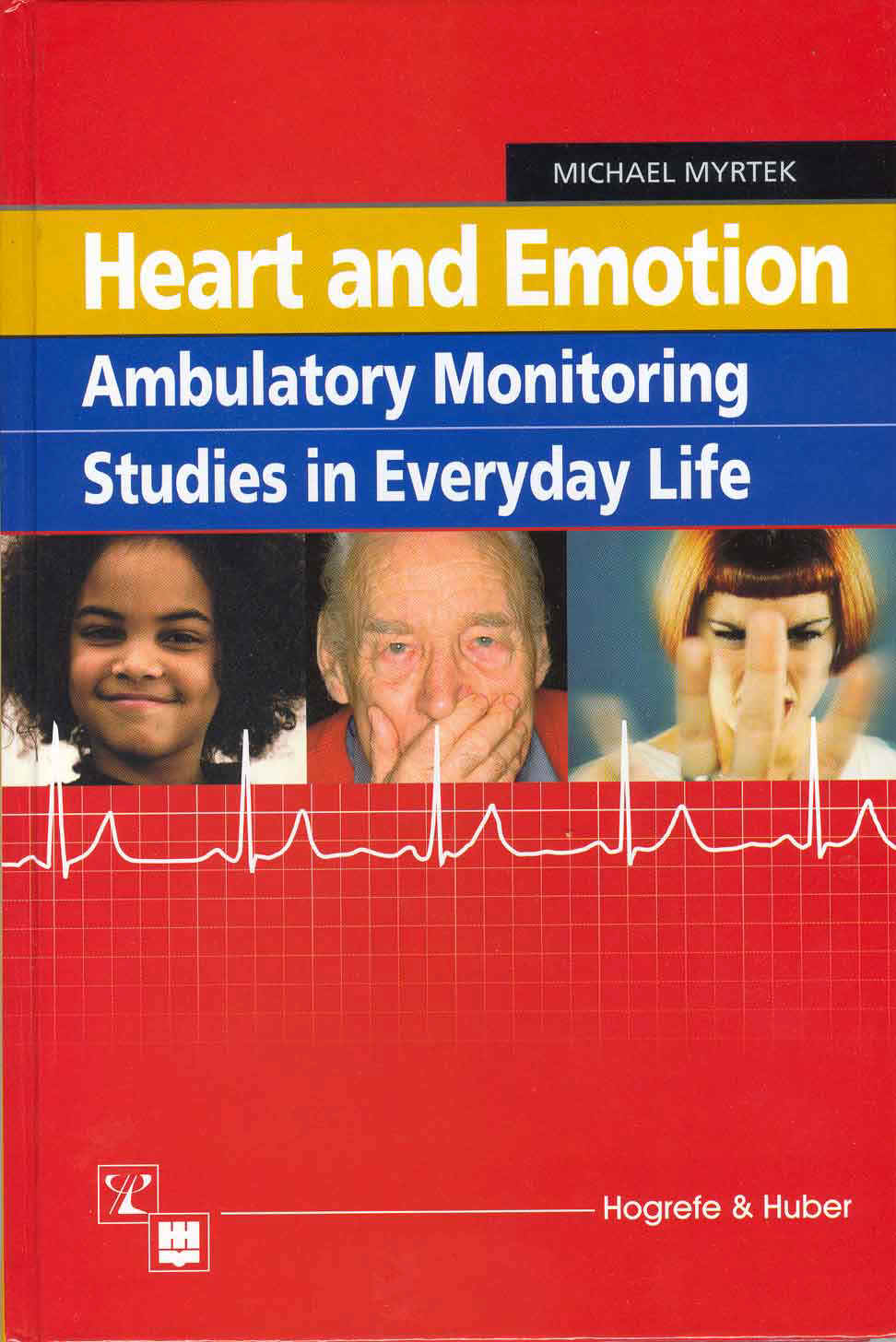
Michael Myrtek Heart and Emotion Ambulatory Monitoring Hogrefe & Huber Publishers
ISBN 0-88937-286-1 The connection between acute emotional arousal and heart rate is well known, both from poetry and from the evolutionary survival reflex known as the fight-flight reaction. The connection between stress and disease is also well known. What is less well known is that the heart reacts to nearly all stimuli, independently of physical exertion, during both the day and the night. These changes, known collectively as the "additional heart rate" or aHR, are mostly unconscious and to date have been hard or impossible to study in real life. This book first presents a revolutionary new technique for monitoring and analyzing the additional heart rate during everyday life, and then goes on to show that contemporary theories about emotion, stress, and disease are no longer tenable. This technique, the Freiburg Monitoring System, allows heart rate changes not associated with physical activity to be assessed objectively, in real-life situations, and to be compared with individuals' subjective feelings at the time. After describing the relevant models and the foundations of the technique, the book then moves on to present the most important results of recent research using the Freiburg Monitoring System. This has involved more than 1,300 subjects of various ages, both male and female, including white- and blue-collar workers, train and bus drivers, dispatchers, university students, schoolchildren, heart disease patients, and patients with cardiac neurosis and rheumatic diseases, and has looked at topics such as the perception of emotions, the perception of the heart in healthy subjects and patients, stress and strain at the workplace and during leisure time, and physiological monitoring during the night. Convincing research evidence, obtained using a ground-breaking new technique for examining the "additional heart rate" in natural settings, showing that contemporary theories about emotion, stress, and disease are no longer tenable. |